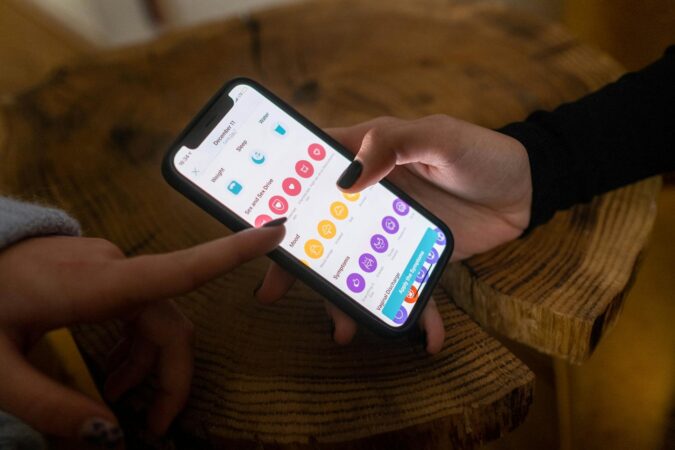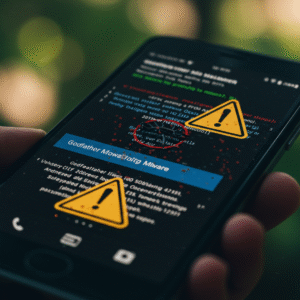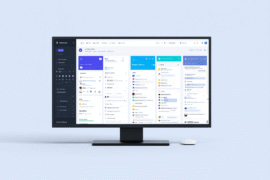This article may contain references to products or services from one or more of our advertisers or partners. We may receive compensation when you click on links to those products or services. Nonetheless, our opinions are our own.
The information presented in this article is accurate to the best of our knowledge at the time of publication. However, information is subject to change, and no guarantees are made about the continued accuracy or completeness of this content after its publication date.
- Why Current Apps Don’t Fully Support Non-Bleeding Users
- Why Menstrual Tracking Isn’t Just About Bleeding
- How Most Tracking Apps Fall Short
- Broadening the Definition of a Cycle
- Use Cases That Illustrate the Gap
- Missed Opportunities in App Design
- What Personalization Should Look Like
- Competitive Alternatives with a Broader Approach
- Reframing the Value of Non-Bleeding Tracking
- Frequently Asked Questions
- Recommended Reads
Why Current Apps Don’t Fully Support Non-Bleeding Users
Digital health apps are increasingly central to how individuals manage their physical and emotional wellness. Among these tools, cycle-tracking applications are often positioned as proactive solutions for reproductive awareness and hormonal balance. Yet many users, particularly those who do not experience regular bleeding, are finding themselves underserved. This disconnect reveals a deeper issue: most popular apps continue to rely on outdated assumptions about what a menstrual cycle looks like. This includes platforms like Clue, which, despite offering a sleek interface and valuable symptom tracking, falls short for individuals whose cycles do not follow conventional patterns.
Why Menstrual Tracking Isn’t Just About Bleeding
Cycle tracking is often interpreted narrowly as a way to log periods, predict fertility, and manage pregnancy planning. But this model ignores the reality that hormonal fluctuations occur even in the absence of visible menstrual bleeding. People using hormonal birth control, undergoing gender-affirming hormone therapy, or managing conditions like PMDD (Premenstrual Dysphoric Disorder) or PCOS (Polycystic Ovary Syndrome) may not bleed regularly, or at all, yet still experience cyclical patterns that influence energy levels, mood, and cognitive performance. From a wellness and even financial standpoint, these fluctuations can influence work efficiency, emotional spending habits, and time management. That makes inclusive tracking functionality not just a matter of equity but one of practical value.
How Most Tracking Apps Fall Short
Despite the increased diversity in user needs, mainstream apps continue to assume a standard 28-day cycle and focus heavily on period start dates. In doing so, they overlook the broader range of bodily experiences many users go through each month.
Common Limitations Found in Popular Cycle Trackers
- Static Onboarding Models: Users are often required to input a last period date to begin tracking, excluding those who do not have one.
- Generic Mood Logging: While mood entries are available, they lack contextualization, making it difficult to identify behavioral trends.
- Cycle Predictions Based on Bleeding: Ovulation and hormonal phase predictions are based almost entirely on period dates, which renders the data inaccurate for non-bleeding users.
This lack of flexibility forces many users to either log false information to unlock app features or give up on tracking altogether.
Broadening the Definition of a Cycle
A more functional and inclusive approach to tracking would involve rethinking what constitutes a “cycle.” Hormonal rhythms continue even in non-bleeding scenarios. Stress, medication, lifestyle changes, and chronic conditions all influence these patterns. Recognizing these elements allows apps to support a wider demographic, one that is growing in both visibility and demand.
Voted "Best Overall Budgeting App" by Forbes and WSJ
Monarch Money helps you budget, track spending, set goals, and plan your financial future—all in one app.
Get 50% OFF your first year with code MONARCHVIP
Use Cases That Illustrate the Gap
| User Type | Specific Tracking Needs |
|---|---|
| Individuals on Hormonal Birth Control | Tracking synthetic hormone responses, side effects, libido, and mood changes |
| People with PMDD or PCOS | Monitoring flare-ups, symptom spikes, and energy shifts that aren’t tied to bleeding |
| Transgender and Non-Binary Users | Observing how hormone therapy influences sleep, mood, and skin health, independent of menstruation |
Each group interacts with hormonal data differently. A tracking system based only on menstruation cannot provide useful insights to these users.
Missed Opportunities in App Design
One of the most overlooked areas in digital health tools is the emotional experience of the user. Emotional volatility is not only common but often cyclical, yet it is rarely addressed in meaningful ways by cycle trackers. Clue, for instance, allows mood tracking, but the app doesn’t offer context or insights tied to hormonal changes over time. Moreover, the absence of community support functions, a feature offered by some competitors, limits user engagement and emotional validation. Peer interaction can be particularly helpful for those going through identity-specific experiences or complex health conditions, providing a layer of support that algorithms cannot replicate.
What Personalization Should Look Like
To deliver more meaningful support, apps should begin with a deeper intake process. For example, asking
- “Are your cycles currently influenced by medication or therapy?”
- “Would you like to track hormonal trends without relying on bleeding data?”
- “Which symptoms or emotional patterns would you like insights on?”
Such personalization could enable dynamic dashboards that focus on what’s actually happening in the user’s body and mind. For investors, developers, and health economists, this translates into stronger user retention, lower churn, and a more engaged community, all critical metrics in the competitive wellness tech sector.
Competitive Alternatives with a Broader Approach

Users who find Clue’s current model limiting may consider other platforms with more expansive tracking features.
- Flo: Offers a conversational tone and has a built-in user forum for anonymous sharing and peer advice.
- Ovia: Focuses on life-stage wellness and offers adaptable health tracking that moves beyond menstruation.
- Everyday: Designed with custom entry fields, it gives users more control over the parameters they wish to track, from mood to sleep quality.
While none of these apps are perfect, they represent incremental steps toward more flexible health tracking that aligns with real diversity in user experience.
Reframing the Value of Non-Bleeding Tracking
Financial and emotional well-being often intersect more than we realize. Hormonal shifts can subtly impact decision-making, productivity, and even personal finance habits. Ignoring this reality puts both app users and developers at a disadvantage. As consumer demand shifts toward more inclusive digital health tools, companies that fail to adapt will inevitably lose relevance. Platforms that accommodate the needs of non-bleeding users not only provide better service, they also demonstrate a deeper knowledge of the human experience. In turn, this earns user trust and loyalty, two assets more valuable than any algorithm.
Frequently Asked Questions
What does non-bleeding cycle tracking involve?
It includes tracking symptoms, mood patterns, energy levels, and other physiological or emotional shifts not tied to menstrual bleeding. It’s particularly useful for users managing hormonal therapy, contraceptives, or reproductive conditions.
Why do current apps fall short for these users?
Many rely on menstrual data as a base metric, which excludes individuals who don’t menstruate or have irregular cycles. This results in incomplete or misleading insights.
Are there better alternatives for non-bleeding tracking?
Apps like Flo, Ovia, and Everyday offer broader health tracking tools and allow users to log a variety of symptoms without relying on a standard cycle model.
How does this relate to personal productivity or finance?
Hormonal fluctuations can affect sleep, focus, mood, and stress levels, which influence decision-making and productivity. Recognizing patterns allows users to better plan work and self-care, reducing burnout and financial missteps.
What improvements can Clue and similar apps make?
Including optional non-bleeding tracking templates, more detailed emotional analytics, and personalized onboarding questions would significantly improve usability for a wider audience.

Reviewed and edited by Albert Fang.
See a typo or want to suggest an edit/revision to the content? Use the contact us form to provide feedback.
At FangWallet, we value editorial integrity and open collaboration in curating quality content for readers to enjoy. Much appreciated for the assist.
Did you like our article and find it insightful? We encourage sharing the article link with family and friends to benefit as well - better yet, sharing on social media. Thank you for the support! 🍉
Article Title: Why Clue’s Cycle Tracking Falls Short for Non-Bleeding Users
https://fangwallet.com/2025/07/02/why-clues-cycle-tracking-falls-short-for-non-bleeding-users/The FangWallet Promise
FangWallet is an editorially independent resource - founded on breaking down challenging financial concepts for anyone to understand since 2014. While we adhere to editorial integrity, note that this post may contain references to products from our partners.
The FangWallet promise is always to have your best interest in mind and be transparent and honest about the financial picture.
Become an Insider

Subscribe to get a free daily budget planner printable to help get your money on track!
Make passive money the right way. No spam.
Editorial Disclaimer: The editorial content on this page is not provided by any of the companies mentioned. The opinions expressed here are the author's alone.
The content of this website is for informational purposes only and does not represent investment advice, or an offer or solicitation to buy or sell any security, investment, or product. Investors are encouraged to do their own due diligence, and, if necessary, consult professional advising before making any investment decisions. Investing involves a high degree of risk, and financial losses may occur including the potential loss of principal.
Source Citation References:
+ Inspo
There are no additional citations or references to note for this article at this time.












































